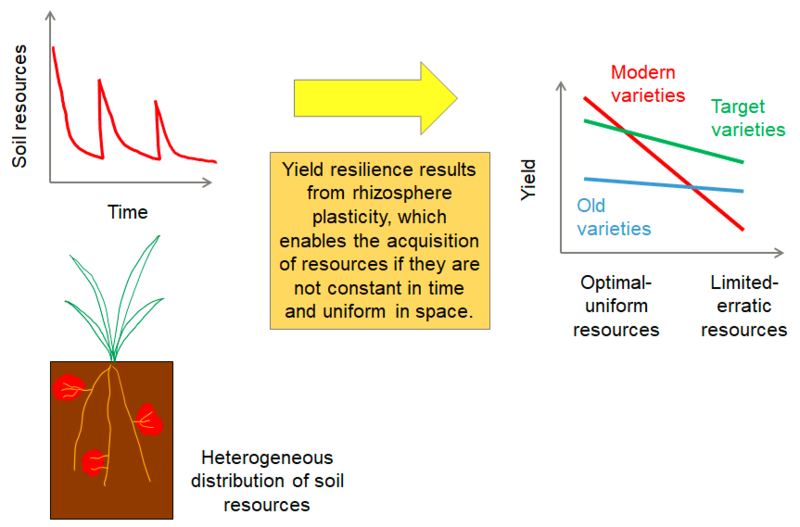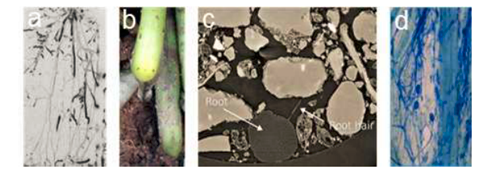 |
Hypotheses
We hypothesize that plasticity of rhizosphere traits allows to maintain yield stability under more variable and unpredictable conditions in time (drought, precipitation) and space (heterogeneity of resources) (Fig. 2).
We posit that higher plasticity of rhizosphere traits can be found in landraces (Fig. 2), and that such traits must be fostered in modern cultivars to face the challenges of future crop production.
|
|
|
Figure 2: Main hypotheses of the project: Target varieties with high and stable yield; Old varieties: low yield, high resilience of yield to scarce erratic resources (e.g. water); Modern varieties: high yield, low resilience of yield to scarce erratic resources. |
Plasticity of rhizosphere traits include processes taking place in the zone around the roots that facilitate the extraction of soil resources when these resources are: 1) scarcely available and 2) not uniformly distributed in space and 3) in time. Plastic traits include root morphology, exudation, mucilage secretion, root hair density and length, mycorrhization, and microbiome selection (Fig. 3).
|
Figure 3: Examples of rhizosphere traits and methods that will be investigated and used in "RhizoTraits". a: profile of root exudates from 14C imaging (Holz et al. 2018). b: mucilage exuded by the nodal roots of field-grown maize. c: X-ray CT of barley roots in an undistributed structured soil, showing the importance of root hairs to connect the root surface to the soil matrix. d: vesicles and intercellular hyphae produced by a Glomus species in a maize root. |


